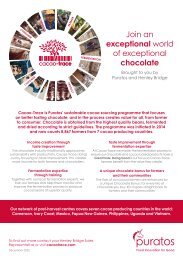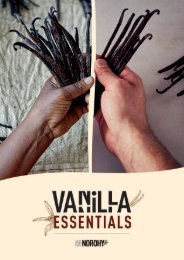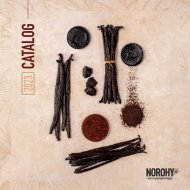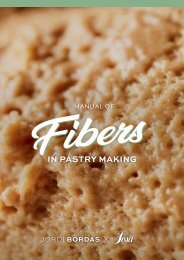Chocolate product guide | Henley Bridge
We’re pleased to launch our brand-new chocolate product guide, bringing all your favourite cacao-based products together in one place! From buttons to blocks in dark, white, milk and ruby, we've got an extensive range of premium ingredients for you to consider. We've also included sustainability and application information, alongside techniques, recipes and much much more!
We’re pleased to launch our brand-new chocolate product guide, bringing all your favourite cacao-based products together in one place! From buttons to blocks in dark, white, milk and ruby, we've got an extensive range of premium ingredients for you to consider. We've also included sustainability and application information, alongside techniques, recipes and much much more!
Create successful ePaper yourself
Turn your PDF publications into a flip-book with our unique Google optimized e-Paper software.
Temper, temper...<br />
<strong>Henley</strong> <strong>Bridge</strong><br />
Development Chef Samantha<br />
shares her top tips<br />
for tempering chocolate<br />
Tempering chocolate is an important technique<br />
for chocolatiers to master, and one which requires<br />
patience, skill, concentration – and a good<br />
thermometer!<br />
Achieving that all-important shine and ‘snap’<br />
when the chocolate is broken is a reward in itself.<br />
It is all about getting the crystal structure correct<br />
in order to avoid fat bloom (where white streaks<br />
appear on the top of chocolate). This occurs<br />
because the cocoa butter crystallisation is<br />
uncontrolled and uneven. When chocolate is<br />
melted, the molecules separate but, when you<br />
temper chocolate, those molecules are bonded<br />
back together so that the chocolate will harden<br />
with a glossy, crisp finish.<br />
The three key factors in tempering chocolate are<br />
TIME, TEMPERATURE and MOVEMENT.<br />
MARBLE TEMPERING<br />
1. Melt the chocolate to 45°C<br />
(microwave, dry bain marie, warming cabinet)<br />
2. Pour 2/3 of the chocolate out onto a marble slab<br />
3. Move the chocolate round the marble slab constantly<br />
with a palette knife and scraper<br />
4. You will see the chocolate start to get thicker<br />
and start to crystallise<br />
5. Remove the chocolate from the marble slab to a clean<br />
dry bowl and add the remaining hot chocolate to bring it<br />
back up to correct working temperature<br />
6. Mix together until all completely at one temperature<br />
7. Check the temperature is correct for<br />
the chocolate that you are working with<br />
8. Always test the temper before filling the moulds<br />
9. Place the chocolate into a piping bag and fill bar moulds<br />
or chocolate moulds as required<br />
76















